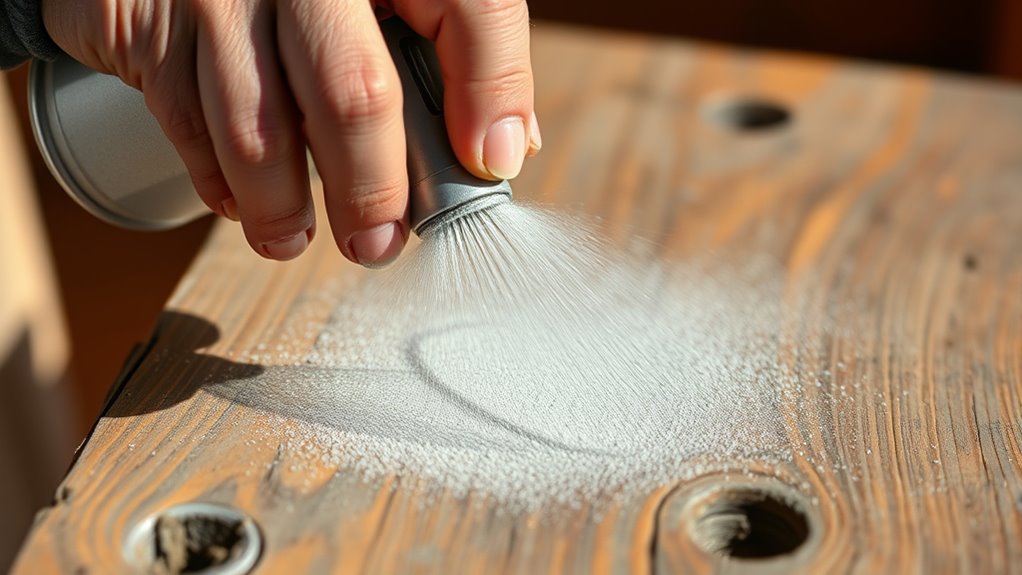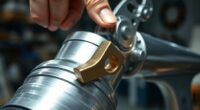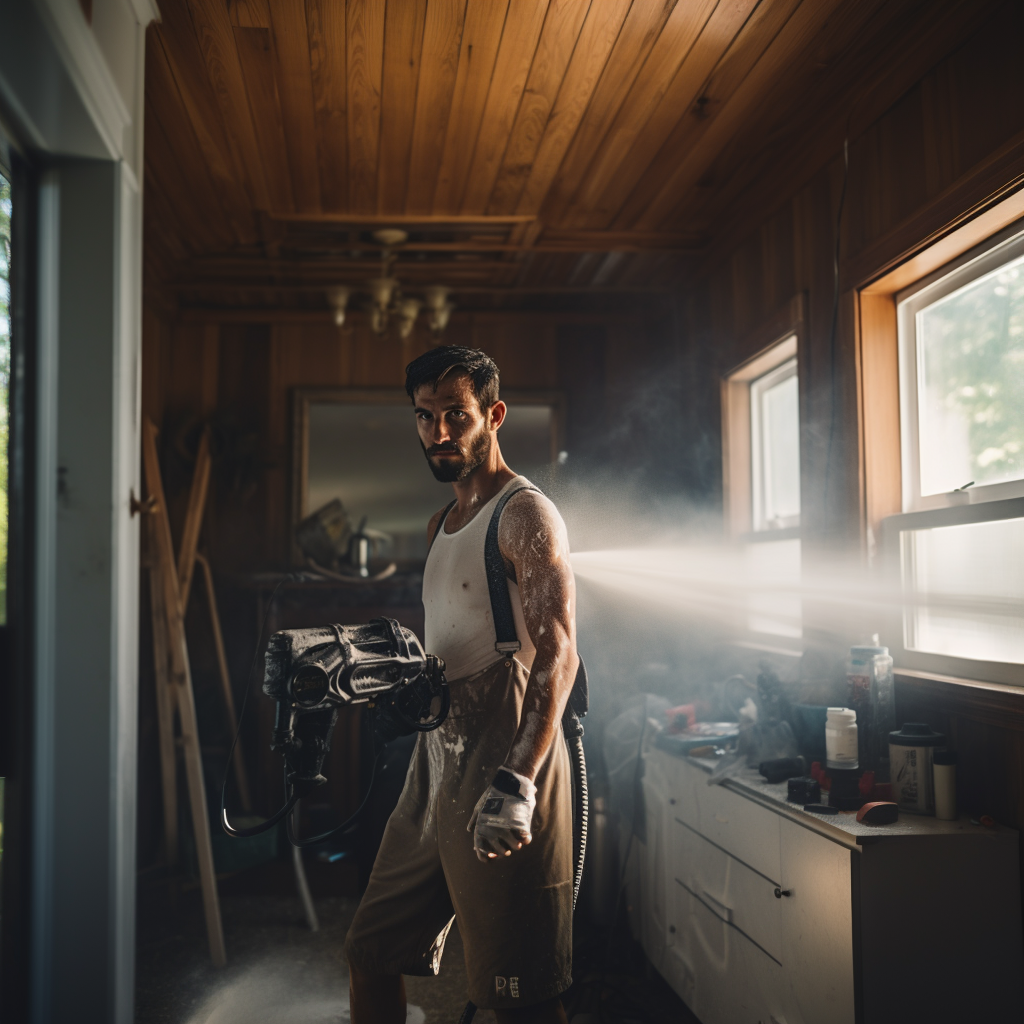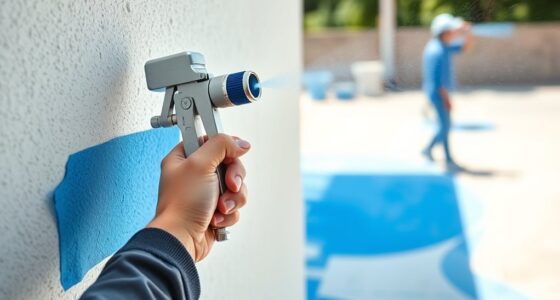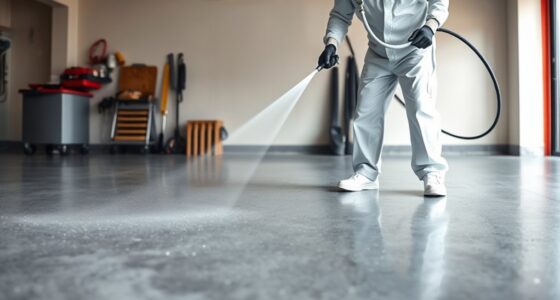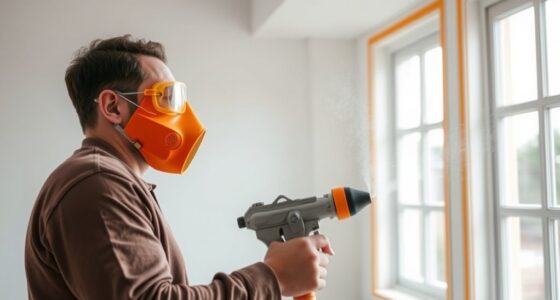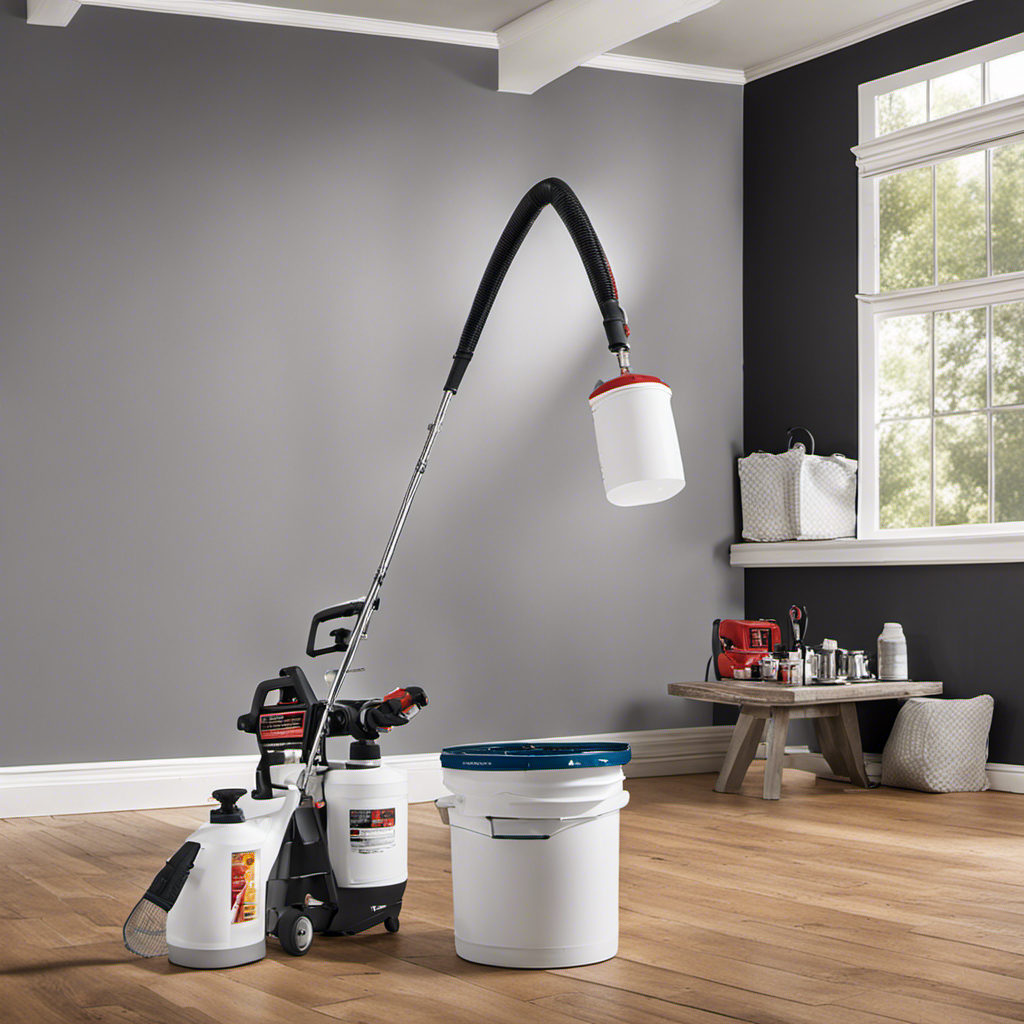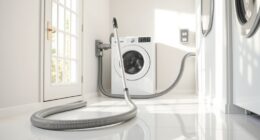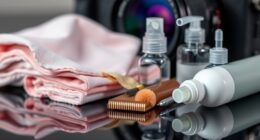Spraying chalk paint and milk paint transforms their application by providing a smoother, more even finish that’s harder to achieve with brushes or rollers. It also enhances durability, making your furniture less prone to chipping, staining, or peeling over time. You’ll notice a more professional look and the ability to layer or add details easily. If you keep exploring, you’ll discover how these techniques can help you achieve beautiful, long-lasting furniture finishes efficiently.
Key Takeaways
- Spraying chalk paint creates a smoother, more even finish compared to brushing, enhancing furniture appearance.
- Milk paint sprayed coats may require more careful surface prep due to its porous and chalky nature.
- Chalk paint often dries faster and adheres well with spraying, resulting in a polished, durable surface.
- Milk paint spraying can produce a slightly textured or matte finish, emphasizing a vintage or rustic look.
- Proper technique and equipment are essential for both paints to achieve optimal adhesion and durability when sprayed.
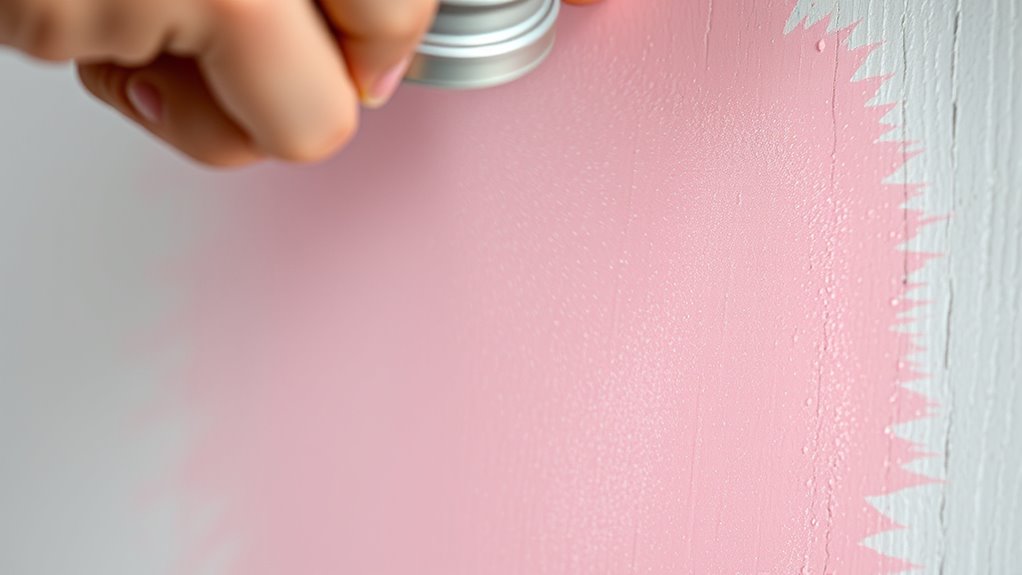
Have you ever wondered if spraying chalk paint or milk paint can make your furniture makeover easier and more professional-looking? The answer is yes, especially when you explore the different application techniques involved. Spraying allows you to achieve a smooth, even coat that brush strokes often can’t match, giving your furniture a sleek, polished appearance. But beyond just a prettier finish, spraying can also impact the finish durability. When done correctly, it can create a more resilient surface that withstands daily wear and tear better than traditional brushing methods.
Application techniques play a vital role in maximizing the benefits of spraying. With spray application, you need to hold the sprayer at a consistent distance from the surface and use smooth, overlapping strokes. This ensures a uniform distribution of paint, reducing drips and uneven coverage. It’s important to prep your furniture properly—clean, sand, and prime if necessary—so the spray adheres well and dries evenly. Using the right spray equipment is equally essential; a HVLP (High Volume Low Pressure) sprayer often works best for chalk and milk paints because it minimizes overspray and provides better control. Practice on a scrap piece first to get a feel for the spray pattern and flow rate, which helps you avoid wasting paint and ensures a professional-looking finish. Additionally, understanding the finish durability of your paint can help guide your application process to achieve longer-lasting results.
When it comes to finish durability, spraying can considerably enhance the longevity of your painted furniture. A smooth, even coat reduces the chances of chipping or peeling over time, especially if you apply multiple thin layers rather than a thick one. Additionally, spraying allows you to incorporate protective topcoats more seamlessly, such as clear sealers or waxes, which contribute to the durability of the finish. This method helps create a more sealed surface, resisting moisture, scratches, and stains better than brush-applied paint, which can sometimes leave brush marks or uneven layers that weaken over time.
While spraying offers many advantages, it’s not without its learning curve. Proper technique and equipment maintenance are key to achieving the best results. Once mastered, spraying chalk or milk paint can transform your furniture projects, making them look more professional and last longer. The combination of precise application techniques and an understanding of how spraying influences finish durability ensures your furniture not only looks great but also withstands the test of time.
Frequently Asked Questions
Can I Spray Chalk or Milk Paint on Outdoor Furniture?
Yes, you can spray chalk or milk paint on outdoor furniture, but you need to take into account outdoor durability and paint adhesion. To guarantee the finish lasts, prepare the surface properly by cleaning and sanding. Use a high-quality primer if needed, and apply a weatherproof sealant for extra protection. This helps improve outdoor durability and ensures the paint adheres well, keeping your furniture looking great longer.
How Long Does Sprayed Chalk or Milk Paint Last?
If you spray chalk or milk paint on outdoor furniture, expect the paint to last about 1-3 years, depending on exposure and prep work. For example, a furniture piece painted with proper sealing can maintain its finish longevity longer. Factors like climate and maintenance affect paint durability; regular sealing helps preserve the finish and extends its lifespan, ensuring your painted furniture stays vibrant and protected longer.
Do I Need Special Equipment for Spraying These Paints?
Yes, you need special spray equipment to achieve a smooth, even finish with chalk or milk paint. Make certain you select the right spray gun for your project and prepare your paint properly by thinning it if necessary. Proper paint preparation ensures better atomization and reduces clogging. Using the appropriate spray equipment helps you control the application, resulting in a professional-looking finish without drips or uneven coverage.
Are There Safety Precautions When Spraying Chalk or Milk Paint?
Think of safety precautions as your paint’s shield. When spraying chalk or milk paint, you need to wear a mask and gloves because paint consistency can release fine particles that irritate your lungs and skin. Always guarantee proper surface preparation to prevent overspray and splattering. Ventilate your workspace well, and keep a clean, organized environment to protect yourself from fumes and mess, making your project both safe and successful.
How Do I Clean My Spraying Tools After Use?
After spraying chalk or milk paint, you should clean your spraying tools immediately to prevent paint from drying and clogging your equipment. Use warm water and mild soap for water-based paints, thoroughly cleaning brushes and spray tips. For stubborn residue, consider solvent options like mineral spirits or paint thinner, but always check manufacturer instructions. Proper cleaning guarantees your tools stay in good condition and ready for your next project.
Conclusion
Spraying chalk paint and milk paint transforms your projects, blending ease with artistry. While chalk paint offers quick, smooth coverage—like a whisper—you’ll find milk paint more textured and rustic, adding character and depth. It’s a perfect contrast: one’s sleek finish versus the other’s charming imperfections. So, whether you crave refined elegance or a vintage feel, choosing between them becomes about embracing different personalities. Ultimately, both bring unique beauty to your creations—proof that paint’s true magic lies in your hands.
Franz came aboard the Paint Sprayer Zone team with a background in both journalism and home renovation. His articulate writing style, combined with a passion for DIY projects, makes him an invaluable asset. Franz has a knack for breaking down technical jargon into easy-to-understand content, ensuring that even the most novice of readers can grasp the complexities of paint sprayers.
